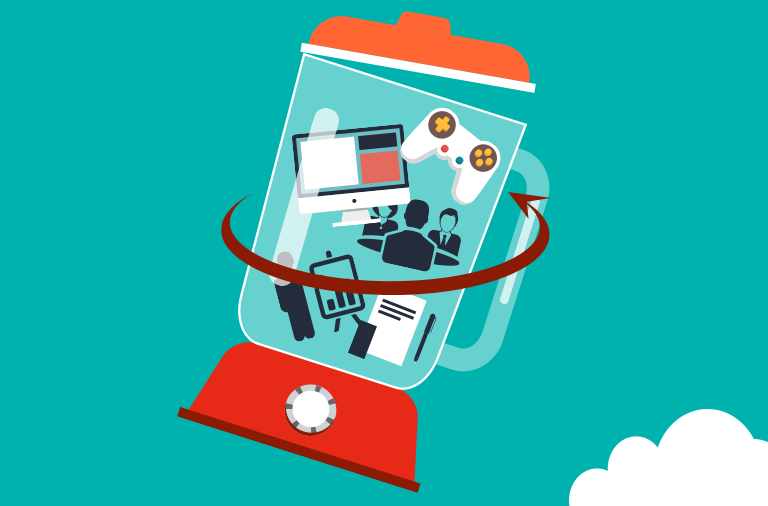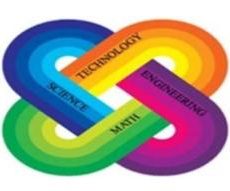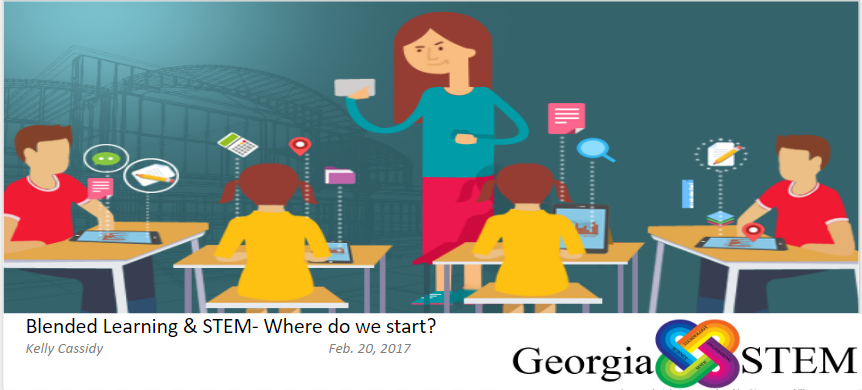STEM education and Blended learning
At first Blended or Personalized Learning and STEM may seem like 2 different initiatives; however, they don’t have to be. With the right leadership and plan, Blended STEM can be very powerful.
 Why Blend?
Why Blend?
Blended learning is not just another educational fad. It is a fundamental redesign of instructional models with the goal of accelerating learning toward college and career readiness. It is a large-scale opportunity to develop schools that are more productive for students and teachers by personalizing education to ensure that the right resources and interventions reach the right students at the right time.
Unlike other “revolutionary models” that come to mind (any other teachers out there thinking about UBD or LFS?), blended design is not just a way for companies to sell you instructional materials. In fact, if blended learning is done effectively- you should not be using or learning anything new that teachers and students do not already know how to use. (at least not when you are getting started) Let me explain
Use what you know!
Blended learning is most effective if teachers do not feel overwhelmed when starting. Districts who invest thousands of dollars in fancy LMS systems are always disappointed when teachers do not immediately begin using the system. Why does this happen? Simple- teachers and students have to take time to learn a new system and that is overwhelming for some. Districts may think that they are providing this great tool and get very excited but teachers may not agree.
Sure- you will always have some digital gurus who will jump on board and be excited to learn all the new bells and whistles of the system but y0u have to consider the overall goal of the project. As a system, do you want a system that looks beautiful and fancy or do you want a system with large teacher buy-in that works to increase student achievement?
 Freemont vs Humbletown
Freemont vs Humbletown
District 1, call them Freemont, got a great grant to push instructional technology. They gathered district representative and sent them to a conference. The big companies saw the district reps and the dollar signs and made a hard sell. The district decided on an LMS and hired the company to do the training. The LMS had it all. It could do online classes, quizzes, discussion boards, include videos, audio and images. Teachers could upload their entire classes into this robust beast. They were trained for 3 days and told how exciting it would be and told to get started. Fast forward to 6 months later- the district representatives are sitting in a room looking at the usage data. Only 6% of teachers are using the program daily and 12% weekly. About 25% of instructors have not logged on since their training. So- What went wrong?
In contrast, the case of District 2, Humbletown. Parents could not understand their children’s math homework. They were emailing and calling the school and trying to figure out this new way that the teachers were doing long division. The principal called in a group of teachers, some experienced, some newbies and some parents and asked what could be done. The key here is that the principal did not have the meeting to “tell” the group the solution, the meeting was organized to listen and solve the issue as a group.
Teachers: “Parents are not supportive. They keep teaching the kids how to do math the way they were taught and it is frustrating” The teachers explained that they had sent home a worksheet explaining it at the beginning of the year.
Parent: “This new math doesn’t make any sense. It takes my kid like 20 min to do a problem and they still get the wrong answer. What was wrong with the old way?” They also explained that the worksheet had gotten lost in the sea of papers sent home or some said that they still didn’t understand it.
The group realized quickly that parents just needed an explanation of how the new math was done and why they were teaching it this way.
The principal asked- Ok- So what do you guys do when you don’t know how to do something? Some of the adults said they would ask another mom or person but finally one of the younger teachers said- “I just look it up on YouTube” Immediately all the stakeholders admitted that they had also used this strategy. So a plan was formed. The teachers would video themselves using a simple iPhone or iPad doing the homework problems and upload those to a YouTube channel. They would take turns so that none of the teachers would feel overwhelmed and the link to the video helpers would be sent home each week in the newsletter and posted on the website.
Which one of these cases do you think had more student achievement impact? On paper- it looks like it should be the fancy LMS with all the bells and whistles; however, this was not the case. Parents, kids and teachers were more comfortable with YouTube. They essentially used a simple solution to create blended math at the elementary level. The beautiful thing is that it didn’t cost the district one penny and had a huge student and parent usage rate.
Ok so how does this relate to Blended STEM?
First, we don’t want to make the mistake that Freemont did. There are some stellar Blended STEM programs out there for purchase and while there are districts in which this is successful, it must be purchased as a result of a team decision including all stakeholders. Think you have a team assembled and you are looking for such a Blended STEM provider, check out Project Lead the Way
To take the approach of Humbletown, begin with where your students and teachers are. Gather a group of stakeholders and open the conversation. The beauty of this approach is that it is specific to each system; however, for this reason, I cannot tell you the exact solutions and suggestions that will be made. I can give some potential ideas from my own experience with this process:
What are students doing in their leisure time? What type of interactions would improve the quality of their family time while also affecting STEM achievement? Having trouble with kids at middle school flipping bottles- turn it into a lesson-
Now you may say- yeah- but flipping bottles is a waste of time. Hmmmmm….. possibly but Dude Perfect has more than 34 million views on that video. How much money do you think they made on this one video? Sometimes getting kids excited and thinking about physics or engineering takes something simple like what makes a good bottle flip successful?
Parents like to see kids excited about learning and school. They want to interact with their students and want their students to be enthralled with what they are doing in their classrooms. (Testing- although a necessity- rarely is a source of excitement for kids)
The local library is a great resource for STEM outreach, especially in conjunction with the summer reading program. Offer a workshop which is supported by some online resources and link it to social media. Need ideas, check out Little STEM Scientists for some we have already used successfully. You will get immediate participation, even from those hard to reach tweeners who have been forced to go to the library with their younger siblings. All of the sudden, everyone wants to post their balloon rocket on their Instagram or Snapchat.
Maybe you challenge kids to see who can make their baloon go further- or who can explain Newton’s force the best? Get creative and get kids excited.
Use what kids, parents, and teachers in your district use. Are they Snapchatting? Build a Snapchat for the district and post a daily STEM challenge. Need Ideas? Check out some Daily STEM challenge ideas. Maybe your district parents or kids use Twitter or Instagram. If so, you better become an expert. If they are frequent YouTube consumers- make sure you have a channel and it is linked to the school’s homepage. Did you know that Older People love Facebook. Maybe that is the best way to reach parents. The only way you will know is if you ask people and really listen to what they say without judgment and then use that information to the advantage of the district. What about TED ED riddles? Get your district involved. Short brain exercises like this are good for developing critical thinking skills. Start with this one 9.5 million people have tried it-
Start small. Look at your CCRPI and pick one subject that really would benefit from some attention. Maybe it is Algebra or Biology? Maybe it is 3rd grade science. Look for areas that you can grow and start there. One step at a time. Get teachers and students excited to see success and the enthusiasm will spread. When something is working, teachers want other teachers to try it- all of the sudden, the district is not pushing blended learning- they are just supporting the desires of the teachers to help facilitate the process.
Have you had successes or failures that you want to share? Did you experience a Freemont or Humbletown example personally? Can we support you in any way? Reach out in the comments below and we would love to be a part of the conversation!



